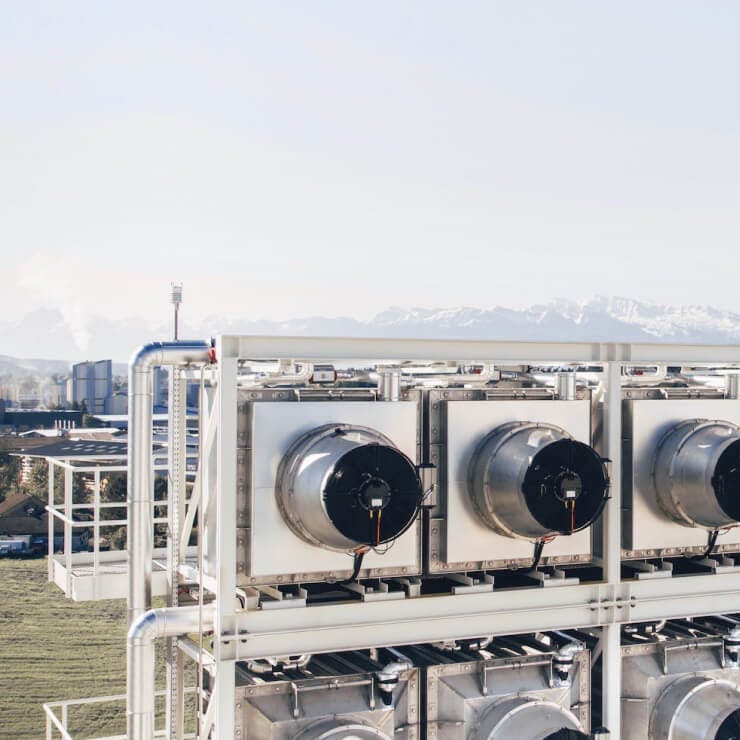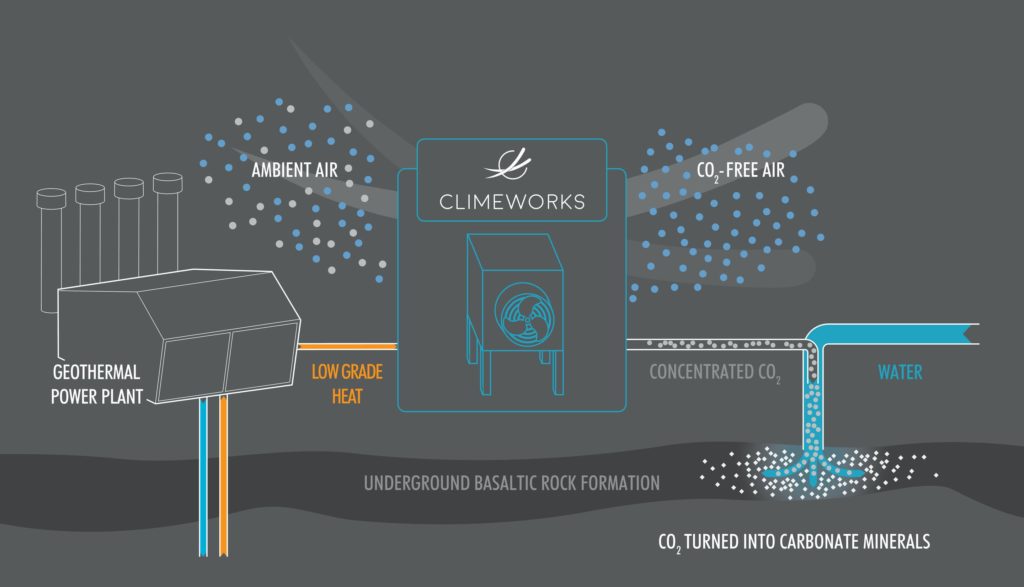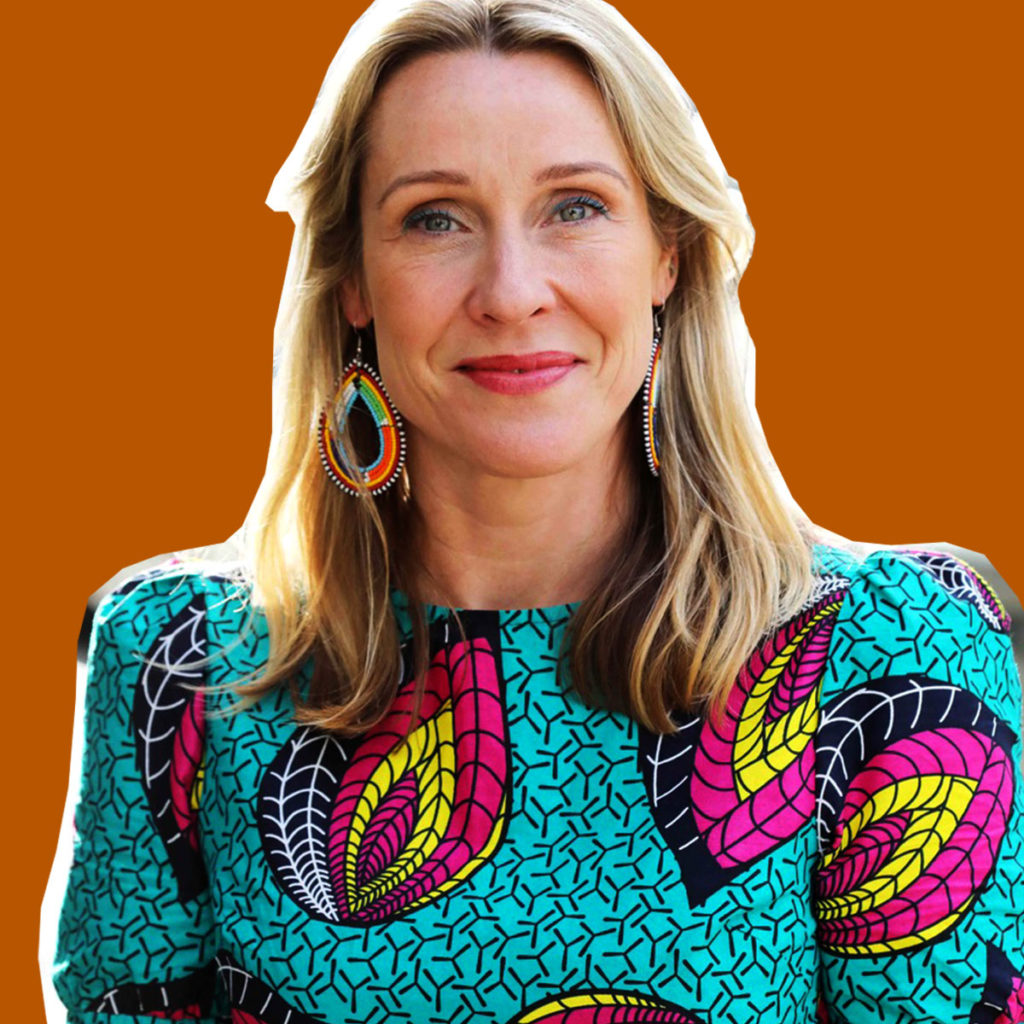
Enough Emissions
Christoph Gebald and Jan Wurzbacher are two friends on a mission. During their leisure time, they ski and climb the Swiss Alps. But their biggest mountain still lies ahead: By 2025, they intend to capture 1% of global CO2 emissions from the air.
To achieve this goal, it’s less about skis or crampons, and more about technology.
“We have shown that our approach of carbon dioxide removal is working,” says Gebald, co-founder of Climeworks, a company founded in 2009 that captures CO2 directly from the air. “It’s incredible to think that back then we were capturing just milligrams of CO2 and now we’re able to capture thousands of tons – a successful, implemented scale-up by a factor of 1 trillion!”
In 2017, they launched the world’s first commercial direct air capture plant. In 2020, Orca was born: a new large-scale carbon dioxide removal plant in Iceland. It filters carbon dioxide from the ambient air, mixes it with water, and pumps the mixture hundreds of meters underground where it’ll be stored indefinitely.
“The name Orca aligns with our new technology generation very well. Orcas are highly social, their community is extremely important and they work together to protect it and to make it thrive. Just as the animal, our plants are supposed to help communities, work efficiently, and fit into their environment to bridge the gap between nature and technology,” says Gebald.
The technological ‘killer whale’ could be better imagined as a giant CO2 vacuum cleaner, but using the name of the aquatic predator better symbolizes the vigorous ambition of the two 37-year-old Germans, who met as undergraduate students at ETH (Eidgenössische Technische Hochschule) in Zurich almost two decades ago.

Image courtesy ClimateWorks
The act of capturing CO2 from the air is considered one of the most promising game-changers in the fight against climate change: “Filtering CO2 already emitted from the air is like a life insurance policy for everything we don’t solve otherwise,” says Reto Knutti, ETH professor for Climate Physics and one of the leading authors of world climate reports by the Intergovernmental Panel on Climate Change (IPCC).
However, Climeworks’ know-how and possibilities to build larger infrastructure is limited. This is why they partnered with two Icelandic companies to scale up the technology: ON Power and Carbfix. While the Icelandic geothermal energy provider ON Power delivers the renewable energy required to run the direct air capture process, the carbon storage pioneers from Carbfix are there to ensure the safe storage of the CO2 through underground mineralization.
“For the first time, we can filter CO2 of this magnitude from the air that has already been emitted and convert it to mineral soil in less than two years,” Carbfix CEO Edda Sif Pind Aradóttir said after signing the partnership agreement in late August.
The new plant is composed of fewer collectors that have a higher capacity each than previous versions. This decreases the materials used amongst others, explains Bergur Sigfússon, Head of CO2 Capture and Injection at Carbfix.
Theoretically, the underground basaltic rock formations in Iceland could provide ideal conditions for storing more than 400 gigatons of carbon dioxide safely and forever – about ten times the amount that the entire human race currently emits per year.
Still, there are obstacles.
“The main issue is to design the injection system to work seamlessly according to the injectivity of the injection well. Every injection well has unique characteristics within known boundaries,” says Sigfússon.
As of February, according to a Reuters report, the fruit of Climeworks and Carbfix’s labor catches and stores 50 tons of carbon dioxide a year, but they are working to expand in a way that will increase this capacity to 4,000 tons annually, the equivalent of 30 households. Though 10 million times more global emissions a year might sound like a drop in the bucket, it suggests that the technology can be scaled up – if money, space, and political will allow.

Image courtesy ClimateWorks
Today, the costs of getting rid of CO2 already emitted into the atmosphere are around $500 USD per ton. The founders hope to get it down to less than $200 USD by optimizing the process and building up larger plants. In order to remove CO2 from the air on the billion ton per year level, an area the size of Houston would be required. Also, a cheap source of renewable energy is needed – a factor which makes Iceland, with its geothermal energy, an attractive place.
Climeworks has raised $110 million USD. But, according to climate expert Reto Knutti, the business case will only work if legislators raise the price for emitting CO2 (e.g. by doubling the steering tax in Switzerland from 110 to 220 USD per ton.) The United States doesn’t have a similar tax yet, although some companies are calculating an internal price on carbon.
At Climeworks, the founders are betting on social change to push things forward.
“The biggest challenge for scaling up is showing that there is a large-scale market for what we are doing, which we are addressing by our goal to inspire one billion people to reverse climate change,” says Gebald.
Starting from 8 USD per month, a subscription model on the company’s website offers everyone an opportunity to remove carbon dioxide from the air. It’s different than carbon credits because with credits, a company or a person can buy offsets but emissions are still taking place. This, instead, is hoping to trap CO2 that’s already been emitted—and keep it there for good.




